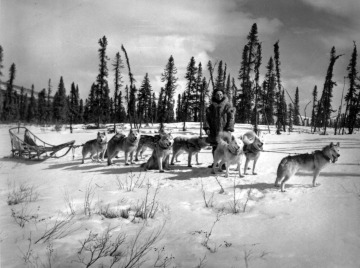1925: Emergency vaccine delivery helps stop diphtheria in Alaska
After the deaths of two Iñupiaq children, Dr. Curtis Welch realizes that diphtheria is spreading in Nome, and the only vaccine in stock is expired. A thousand miles away in Anchorage, white and Alaska Native dog-team drivers, stirred by memories of recent epidemics, agree to relay the medicine to Nome. Over five days, the mushers and dogs risk life and limb to deliver the vaccine, while accounts of their efforts in newspapers across the U.S. raise public support for the use of the diphtheria vaccine.
“An epidemic of diphtheria is almost inevitable here STOP I am in urgent need of one million units of diphtheria antitoxin STOP Mail is only form of transportation STOP I have made application to Commissioner of Health of the Territories for antitoxin already STOP There are about 3000¢White natives in the district.” —Telegram from Dr. Curtis Welch to Alaska Territorial Governor Scott Bone in Juneau, and to the U.S. Public Health Service in Washington D.C.
- Theme
- Epidemics
- Region
- Arctic, Subarctic
Norwegian-born sled dog racer Leonhard Seppala was part of a relay team that delivered diphtheria vaccine to Nome, Alaska in January 1925. Seppala's team traveled hundreds of miles from Nome and back through some of the most treacherous parts of Alaska's wilderness.
Courtesy Robert Fortuine papers, Archives and Special Collections, Consortium Library, University of Alaska Anchorage
